33143-92-9
| Name | 4-(2-methylbut-3-yn-2-yloxy)benzonitrile |
|---|---|
| Synonyms |
4-cyanophenyl 1,1-dimethylpropargyl ether
4-(1,1-dimethyl-2-propynyloxy)benzonitrile 4-[(1,1-DIMETHYLPROP-2-YNYL)OXY]BENZONITRILE p-Cyanophenyl-1.1-dimethylpropargylether 3-(p-Cyanophenoxy)-3-methyl-but-1-in 3-(4-cyanophenoxy)-3-methylbut-1-yne 4-[(2-Methylbut-3-yn-2-yl)oxy]benzonitrile |
| Density | 1.06g/cm3 |
|---|---|
| Boiling Point | 313.4ºC at 760mmHg |
| Melting Point | 30ºC |
| Molecular Formula | C12H11NO |
| Molecular Weight | 185.22200 |
| Flash Point | 132.2ºC |
| Exact Mass | 185.08400 |
| PSA | 33.02000 |
| LogP | 2.34888 |
| Index of Refraction | 1.534 |
Synonym:3-(4-Cyanophenoxy)-3-methylbut-1-yn Section 2 - COMPOSITION, INFORMATION ON INGREDIENTS
Risk Phrases: 20/21/22 36/37/38 Section 3 - HAZARDS IDENTIFICATION EMERGENCY OVERVIEW
Harmful by inhalation, in contact with skin and if swallowed. Irritating to eyes, respiratory system and skin. Potential Health Effects Eye: Causes eye irritation. Skin: Causes skin irritation. Harmful if absorbed through the skin. Ingestion: Harmful if swallowed. May cause irritation of the digestive tract. Inhalation: Harmful if inhaled. Causes respiratory tract irritation. Chronic: Not available. Section 4 - FIRST AID MEASURES Eyes: Flush eyes with plenty of water for at least 15 minutes, occasionally lifting the upper and lower eyelids. Get medical aid. Skin: Get medical aid. Flush skin with plenty of water for at least 15 minutes while removing contaminated clothing and shoes. Ingestion: Get medical aid. Wash mouth out with water. Inhalation: Remove from exposure and move to fresh air immediately. If not breathing, give artificial respiration. If breathing is difficult, give oxygen. Get medical aid. Notes to Physician: Section 5 - FIRE FIGHTING MEASURES General Information: As in any fire, wear a self-contained breathing apparatus in pressure-demand, MSHA/NIOSH (approved or equivalent), and full protective gear. Extinguishing Media: Use water spray, dry chemical, carbon dioxide, or chemical foam. Section 6 - ACCIDENTAL RELEASE MEASURES General Information: Use proper personal protective equipment as indicated in Section 8. Spills/Leaks: Vacuum or sweep up material and place into a suitable disposal container. Section 7 - HANDLING and STORAGE Handling: Avoid breathing dust, vapor, mist, or gas. Avoid contact with skin and eyes. Storage: Store in a cool, dry place. Store in a tightly closed container. Section 8 - EXPOSURE CONTROLS, PERSONAL PROTECTION Engineering Controls: Facilities storing or utilizing this material should be equipped with an eyewash facility and a safety shower. Use adequate ventilation to keep airborne concentrations low. Exposure Limits CAS# 33143-92-9: Personal Protective Equipment Eyes: Not available. Skin: Wear appropriate protective gloves to prevent skin exposure. Clothing: Wear appropriate protective clothing to prevent skin exposure. Respirators: Follow the OSHA respirator regulations found in 29 CFR 1910.134 or European Standard EN 149. Use a NIOSH/MSHA or European Standard EN 149 approved respirator if exposure limits are exceeded or if irritation or other symptoms are experienced. Section 9 - PHYSICAL AND CHEMICAL PROPERTIES Physical State: Solid Color: white Odor: Not available. pH: Not available. Vapor Pressure: Not available. Viscosity: Not available. Boiling Point: Not available. Freezing/Melting Point: 30 - 32 deg C Autoignition Temperature: Not available. Flash Point: Not available. Explosion Limits, lower: Not available. Explosion Limits, upper: Not available. Decomposition Temperature: Solubility in water: Specific Gravity/Density: Molecular Formula: C12H11NO Molecular Weight: 185.23 Section 10 - STABILITY AND REACTIVITY Chemical Stability: Not available. Conditions to Avoid: Incompatible materials. Incompatibilities with Other Materials: Strong oxidizing agents, reducing agents, halogenated agents, halogens. Hazardous Decomposition Products: Nitrogen oxides, carbon monoxide, carbon dioxide. Hazardous Polymerization: Has not been reported Section 11 - TOXICOLOGICAL INFORMATION RTECS#: CAS# 33143-92-9 unlisted. LD50/LC50: Not available. Carcinogenicity: 4-[(1,1-Dimethylprop-2-ynyl)oxy]benzonitrile - Not listed by ACGIH, IARC, or NTP. Section 12 - ECOLOGICAL INFORMATION Section 13 - DISPOSAL CONSIDERATIONS Dispose of in a manner consistent with federal, state, and local regulations. Section 14 - TRANSPORT INFORMATION IATA Shipping Name: NITRILES, SOLID, TOXIC, N.O.S.* Hazard Class: 6.1 UN Number: 3276 Packing Group: III IMO Shipping Name: NITRILES, TOXIC, N.O.S. Hazard Class: 6.1 UN Number: 3276 Packing Group: III RID/ADR Shipping Name: NITRILES, TOXIC, N.O.S. Hazard Class: 6.1 UN Number: 3276 Packing group: III Section 15 - REGULATORY INFORMATION European/International Regulations European Labeling in Accordance with EC Directives Hazard Symbols: XN Risk Phrases: R 20/21/22 Harmful by inhalation, in contact with skin and if swallowed. R 36/37/38 Irritating to eyes, respiratory system and skin. Safety Phrases: S 26 In case of contact with eyes, rinse immediately with plenty of water and seek medical advice. S 36/37/39 Wear suitable protective clothing, gloves and eye/face protection. WGK (Water Danger/Protection) CAS# 33143-92-9: No information available. Canada None of the chemicals in this product are listed on the DSL/NDSL list. CAS# 33143-92-9 is not listed on Canada's Ingredient Disclosure List. US FEDERAL TSCA CAS# 33143-92-9 is not listed on the TSCA inventory. It is for research and development use only. SECTION 16 - ADDITIONAL INFORMATION N/A |
| Hazard Codes | Xi: Irritant; |
|---|---|
| Risk Phrases | R20/21/22 |
| Safety Phrases | 26-36/37/39 |
| RIDADR | UN 3276 |
| HS Code | 2926909090 |
|
~96% 
33143-92-9 |
| Literature: Bell; Davies; Geen; Mann Synthesis, 1995 , # 6 p. 707 - 712 |
|
~86% 
33143-92-9 |
| Literature: Godfrey, Jollie D.; Mueller, Richard H.; Sedergran, Thomas C.; Soundarajan, Nachimuthu; Colandrea, Vincent J. Tetrahedron Letters, 1994 , vol. 35, # 35 p. 6405 - 6408 |
|
~% 
33143-92-9 |
| Literature: US5463059 A1, ; |
|
~% 
33143-92-9 |
| Literature: US5463059 A1, ; |
|
~88% 
33143-92-9 |
| Literature: Godfrey, Jollie D.; Mueller, Richard H.; Sedergran, Thomas C.; Soundarajan, Nachimuthu; Colandrea, Vincent J. Tetrahedron Letters, 1994 , vol. 35, # 35 p. 6405 - 6408 |
|
~81% 
33143-92-9 |
| Literature: Bell; Davies; Geen; Mann Synthesis, 1995 , # 6 p. 707 - 712 |
|
~% 
33143-92-9 |
| Literature: US5463059 A1, ; |
|
~% 
33143-92-9 |
| Literature: Tetrahedron Letters, , vol. 35, # 35 p. 6405 - 6408 |
| Precursor 6 | |
|---|---|
| DownStream 4 | |
| HS Code | 2926909090 |
|---|---|
| Summary | HS:2926909090 other nitrile-function compounds VAT:17.0% Tax rebate rate:9.0% Supervision conditions:none MFN tariff:6.5% General tariff:30.0% |
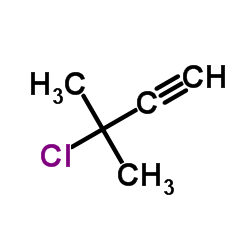
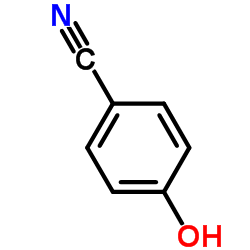

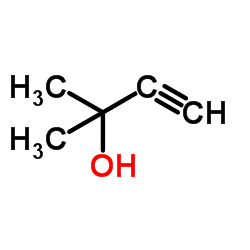
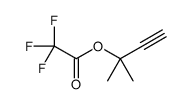
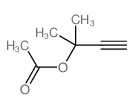


![6-CYANO-TRANS-3-BROMO-3,4-DIHYDRO-2,2-DIMETHYL-2H-BENZO-[B]-PYRAN-4-OL structure](https://image.chemsrc.com/caspic/082/65018-89-5.png)

